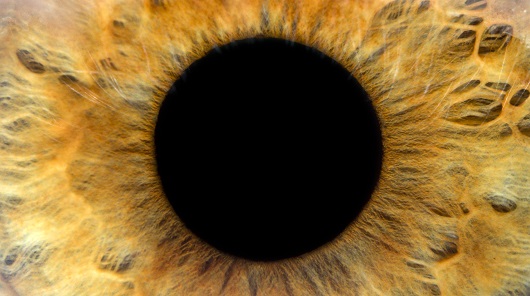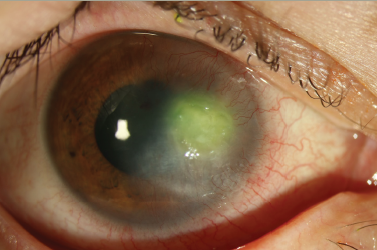Bepotastine besilate is a non-sedating, highly specific histamine-1 (H1) receptor antagonist and a potent mast cell stabilizer with inhibitory activity against eosinophil differentiation, activation, and migration, as well as several other inflammatory pathways.1–4 In animal models of allergic conjunctivitis, bepotastine besilate has been shown to be a more potent inhibitor of vascular hyperpermeability than olopatadine, ketotifen, or levocabastine.5 Its broad clinical utility in allergic disease has been demonstrated over a decade of commercial use in Japan, where an oral formulation (Talion®, Mitsubishi Tanabe Pharma Corporation) is indicated to treat allergic rhinitis, pruritus associated with urticaria, and other skin diseases, including eczema, dermatitis, prurigo, and dermal pruritus.6 This experience spans more than one billion systemic doses.7
Introduced for ophthalmic use in the US in 2009, BEPREVE® (bepotastine besilate ophthalmic solution 1.5 %, ISTA Pharmaceuticals) is indicated for twice-daily dosing in the treatment of itching associated with allergic conjunctivitis. Approval was based on two well-controlled conjunctival allergen challenge (CAC) studies, one single-site and one multi-site, and an additional multi-center, randomized, masked, placebo-controlled, parallel-group, six-week safety clinical trial in 861 healthy subjects.8–10 In the CAC studies, BEPREVE produced clinically significant reductions in ocular itch (greater than one unit improvement over baseline) in 95 % of all patient eyes at onset and in 90 % of all eyes at eight hours, following a single dose.11 Furthermore, in patients whose ocular itching was graded severe (at least 3.0 on the standardized CAC 0–4 itch severity scale), 68 % of eyes had complete resolution of itch at three minutes post dose, compared with only 3 % of placebo-treated eyes.12 Across these studies, BEPREVE was safe and well tolerated, with approximately 25 % of patients experiencing a mild, transient taste following instillation and 2–5 % of patients reporting eye irritation, headache, or nasopharyngitis.13 Ocular comfort ratings for BEPREVE on instillation and five minutes post instillation were comparable to placebo. No dry mouth, dry eye, or drowsiness was reported by patients in the active arms. A comprehensive independent review of BEPREVE, including confirmation of its relative cost-effectiveness compared with other prescription (brand and generic) and over-the-counter ocular allergy products, was recently published.14
New Clinical Data
Since approval, an additional analysis of the BEPREVE clinical trial data and several new studies have been performed. The resulting data on duration of effect, ocular comfort relative to other agents, and efficacy under environmental exposure conditions are useful in expanding our picture of the clinical utility of this agent and establishing its place in our therapeutic armamentarium.
Duration of Action
While the efficacy results following allergen challenge at onset and eight hours supported the approval and bid dosing schedule of BEPREVE, the clinical study protocol also included efficacy evaluations following challenge at 16 hours from a single dose. In results published this year from the single-site trial, BEPREVE 1.5 % achieved statistically and clinically significant reductions in subject-assessed ocular itching, compared with placebo, at all time points (three, five, or seven minutes) 16 hours after dosing in the per-protocol population.15 A significantly greater number of patients in the BEPREVE 1.5 % per-protocol population (p<0.001) and in the baseline severe itching subpopulation (p=0.005) achieved complete or near-complete elimination of itch at 16 hours compared with placebo.
Ocular Comfort
The ocular comfort of BEPREVE was established by the large safety trial, results of which have also been reported separately.16 BEPREVE showed no statistically or clinically significant differences in ocular comfort, compared with placebo, at any study visit when evaluated. Patients in the active arm reported that their eyes were “comfortable” as early as immediately. No treatment-related early withdrawals were due to ocular discomfort or severe adverse events. These observations are beginning to be reinforced by smaller comparative studies performed in the clinical setting. The first of these investigations to be reported evaluated the ocular comfort of several prescription and over-the-counter antihistamine/mast cell stabilizers compared with a preservative-freeartificial tear. Thirty-six patients were asked to rate BEPREVE, Pataday™ (olopatadine 0.2 %), Zaditor®, and Alaway® (both 0.025 % ketotifen preparations) on a comfort scale of 1–10, with 10 being the most comfortable (and equivalent to the artificial tear). BEPREVE and Pataday were found to be significantly more comfortable than either Zaditor or Alaway, with the latter being the least comfortable of the four agents.17
Environmental Exposure Study
A randomized, double-masked, placebo-controlled, parallel-group, natural-exposure clinical trial in patients with active allergic rhinoconjunctivitis was conducted at 12 sites in the US (per-protocolpopulation: BEPREVE (n=123); placebo (n=122). Following a seven-day screening period, subjects were randomized to receive BEPREVE or placebo and then treated for 14 consecutive days, recording their signs and symptoms, including instantaneous grades for itching and redness just prior to each dose, in a diary. At study exit, investigators also rated redness and global therapeutic improvement. BEPREVE produced statistically significant improvement in the reduction from baseline in mean instantaneous grades of both ocular itching (p=0.007) and conjunctival redness (p=0.001) over the two weeks of treatment, compared with placebo. Investigator assessment of the change in redness from baseline (see Figure 1) and therapeutic improvement in overall allergic condition at the end of the treatment period were also statistically superior for BEPREVE. BEPREVE was generally safe and well tolerated: the most frequently reported adverse events were bad/bitter taste (n=13; 10.6 %) and instillation site pain (n=3; 2.4 %).18
Discussion
With a wide variety of oral and topical anti-allergy remedies available over the counter, patients suffering from allergic conjunctivitis often do not visit an ophthalmologist until their efforts at self-medication prove ineffective. Treatment selection in this setting favors agents that are rapidly effective, long-acting, and comfortable, with simple dosing schedules that match patients’ symptomatology. The expanded set of clinical results that is now available for BEPREVE supports a central place for this agent in the management of allergic conjunctivitis. The US Food and Drug Administration (FDA) employs the clinical significance threshold of a 1.0 unit (or greater) difference from baseline at eight and 16 hours in its determination of the appropriate dosing schedule for antihistamine/mast cell stabilizers. BEPREVE achieved clinical significance at eight hours in both the single- and multi-site CAC studies, and, as described by Williams et al., reached clinical significance at 16 hours in the single-site trial.15 Although BEPREVE did not reach this standard in the multi-site study, the 16-hour results from both trials suggest that bid dosing should produce excellent therapeutic coverage through the waking hours with sustained inhibition of the allergic cascade.These data also suggest that a subset of patients may get adequate symptomatic relief with a single daily dose. While no head-to-head studies of BEPREVE and once-daily Pataday have been performed, it is interesting to note that the unpublished 16-hour results from the Pataday clinical program, available in FDA review documents, are roughly comparable to the BEPREVE results (see Table 1). In fact, two of the three studies in the Pataday data set failed to reach the 1.0 unit threshold, requiring a third study, in which the symptom check times were modified. Considering the available data, we can conclude that these agents appear to have similar durations of action, despite their different approved dosing schedules. Based on the study by Spears et al.,17 BEPREVE and Pataday also appear to be very well tolerated on instillation, a benefit that may differentiate these agents from other prescription and over-the-counter agents. Because patient adherence to therapy can be impacted by drop comfort, and our therapeutic goal is to alleviate ocular symptoms of allergy as quickly as possible, these differences in tolerability must be considered. Lastly, we can now add a confirmatory, natural-exposure study to the clinical data set and investigator-initiated studies available to us in evaluating BEPREVE. Because it eliminates the inherent variability between subjects in environmental exposure studies, the validated, highly reproducible CAC study design has become the standard clinical protocol through which all ophthalmic antihistamine/mast cell stabilizers are approved. Interestingly, it is fundamentally a prophylaxis model, in that a subject with known sensitivity to an allergen is dosed with the study medication first and then challenged at specified time points. Despite this, the FDA allows companies to request either a ‘prevention’ or a ‘treatment’ claim on the basis of the same protocol. The unique single-dose/single-challenge design of the CAC model also makes it particularly useful for assessing the onset of action of the study medication, but not practical for measuring improvements in conjunctival redness. Follow-on environmental exposure studies, therefore, not only provide the clinician with study data derived from a more natural setting—the patients are active rhinoconjunctivitis sufferers and use the study medication for several weeks—but also allow researchers to assess efficacy against a full range of signs and symptoms. The study reported by Carr et al.18 shows that BEPREVE, instilled twice daily, has a highly statistically significant effect on ocular itching and conjunctival redness over a two-week treatment period. These observations, combined with data from the original clinical trials, provide a more complete picture of the robust clinical utility of this agent in the treatment of allergic conjunctivitis.
Conclusion
BEPREVE (bepotastine besilate ophthalmic solution 1.5 %), a potentocular antihistamine/mast cell stabilizer with several additional mechanisms of action, has demonstrated rapid and sustained efficacy against ocular itch associated with allergic conjunctivitis, including severe symptoms, in the CAC model. Recently publisheddata from the CAC trials suggest that BEPREVE may relieve ocular itch for as long as 16 hours following a single dose. Additional studies performed since approval suggest that BEPREVE is among the most comfortable agents in its class and have confirmed its efficacy against the signs and symptoms of allergic conjunctivitis in the environmental exposure model.







